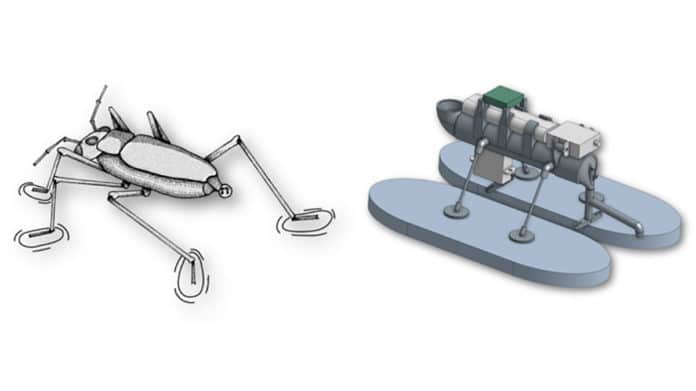Humans have always looked to nature to draw inspiration for innovation. From birds in the sky to fish in the sea, by studying what these creatures have naturally perfected over millennia, engineers create new technologies that are essential to our way of life today. Bio-inspired robotic technologies push the boundaries of what we think is possible when it comes to traveling on land, in the air, and underwater.
Now, engineers from the Michigan Technological University have developed a tiny, self-powered robot inspired by water-skimming insects.
You may think that water strider biological organisms such as insects, arachnids, and even bacteria move across the water’s surface simply by wiggling their legs, but they actually utilize what is known as the Marangoni effect. The Marangoni effect takes place when there is a gradient of surface tension at the interface between two phases – in most situations, a liquid-gas interface.
Motivated by the superb capability of these organisms, researchers conceptualized and created a self-powered and remotely controlled robot that relies solely on the Marangoni effect for both propulsion and change of direction.
The surfing robot can not only stand atop the free surface of the water but can also use Marangoni propulsion for locomotion and maneuverability through a controlled release of isopropyl alcohol (IPA).
Engineers developed custom-made flow control and steering mechanisms. These features complement integrated power and fuel sources, a remote transmitter, a receiver, and two servos, resulting in a non-tethered robotic surfer with unparalleled functionality. The integrated technology in the surfing robot eliminates complicated and undesirable features such as noisy engines or propellers that can disrupt or harm sea life. This means fewer disturbances are introduced into the bulk of the liquid, reducing the drag and making the robot more like the insects it mimics while having the additional benefit of being virtually silent in operation.
This silent, water-striding robot measures about 110 mm in length and can travel as fast as 0.8 body length per second. Currently, the robot can achieve speeds of about 100 millimeters per second with a fuel efficiency of about 600 millimeters per milliliter of propellant fuel.
The team is now working on implementing new and alternative designs and propellants to achieve greater speeds and higher fuel efficiency. They hope that the technology could one day find use in applications such as wildlife observation or environmental monitoring in difficult-to-access locations.
